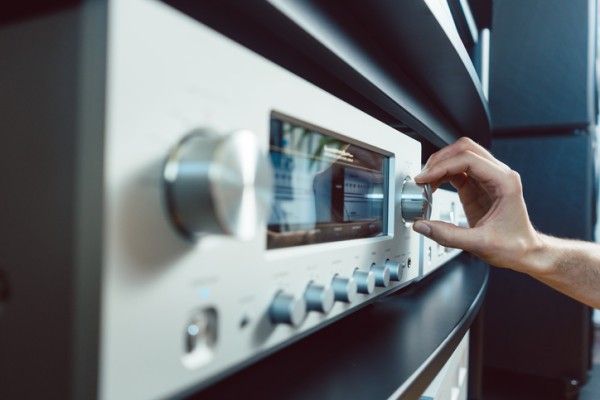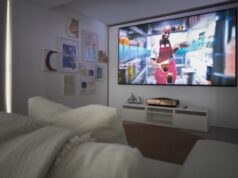
A modern home theatre is more than just a big screen and a comfy chair. It’s an integrated system designed to deliver a true cinematic experience—crisp visuals, immersive sound and seamless control.
If you’re planning a dedicated media room or upgrading your living room for entertainment, understanding the essential components of a home theatre system is the first step. Here’s what to include.
Display: Projector or TV?
The centrepiece of any home theatre is the screen. You’ll need to decide between a high-resolution television or a dedicated projector and screen setup.
- OLED and QLED TVs (often 65–85 inches) are ideal for bright rooms and deliver vibrant colour with deep blacks.
- 4K or even 8K projectors offer a cinematic experience, especially when paired with a proper projector screen and blackout window treatments.
- Projectors require a darker room to perform at their best. If you’re going this route, consider soundproofing and light control from the beginning.
Surround sound system
Immersive audio is just as important as the visuals. A typical setup includes:
- AV receiver: The hub that powers your speakers and connects all your devices.
- Speakers: A 5.1 or 7.1 surround sound system is the standard, but Dolby Atmos configurations (e.g. 5.1.2 or 7.2.4) are increasingly popular for 3D audio.
- Subwoofer: Delivers deep bass frequencies that bring movies and music to life.
Positioning matters. Use our soundproofing techniques guide to keep noise inside your theatre and not in the rest of the house.
Source devices
Modern home theatres rely on multiple digital content sources:
- Streaming devices: Apple TV, Google Chromecast, Amazon Fire Stick and Nvidia Shield support 4K and Dolby Atmos.
- Gaming consoles: PlayStation 5 and Xbox Series X double as media hubs.
- Ultra HD Blu-ray players: Still the best option for lossless audio and uncompressed video.
If you’re going fully digital, you may not need physical media players. But for audiophiles and cinephiles, a dedicated home theatre PC may be worth including.
Control system
Simplifying your controls is critical. You don’t want to juggle five remotes every time you watch a movie.
- Universal remotes or smartphone apps can centralise control of your AV equipment, lighting and motorised blinds.
- For more advanced setups, consider full home automation systems that integrate your theatre with the rest of the house—lighting, climate control and security.
Lighting
Lighting can make or break your experience. Too much glare and the magic is lost.
- Use dimmable lighting, ideally on a smart system that can be automated or voice-controlled.
- Recessed ceiling lights or LED strip lighting along the floor or behind furniture create ambience without distracting from the screen.
Learn more in our article on home theatre lighting techniques.
Acoustic treatments and soundproofing
Good audio isn’t just about the gear—it’s also about the room.
- Acoustic panels, bass traps and carpeting help absorb unwanted echoes.
- Soundproofing the room ensures your movie doesn’t shake the rest of the house.
- Choose the right insulation and wall linings to support your acoustic goals.
Comfortable seating
Don’t forget the human element. Home theatre seating should be ergonomic, durable and positioned correctly in relation to the screen.
- Choose reclining chairs or lounges with cup holders, armrests and neck support.
- Leave enough space for each viewer to have a direct line of sight and unobstructed sound.
You can also explore custom risers for stadium-style seating if your space allows.
Ventilation and climate control
Electronics generate heat—and a poorly ventilated theatre can get uncomfortable fast.
- Install a discreet ventilation system that won’t add noise.
- Integrate it into your climate control system or manage it via home automation.
Bringing it all together
A well-designed home theatre is all about balance. The screen, sound, lighting and furniture must work together in harmony. By planning every component—from wiring and insulation to automation and furnishings—you’ll create a space that rivals your local cinema.
And if you’re starting from scratch, take a look at our checklist on soundproofing and plasterboard installation to set the right foundation.





